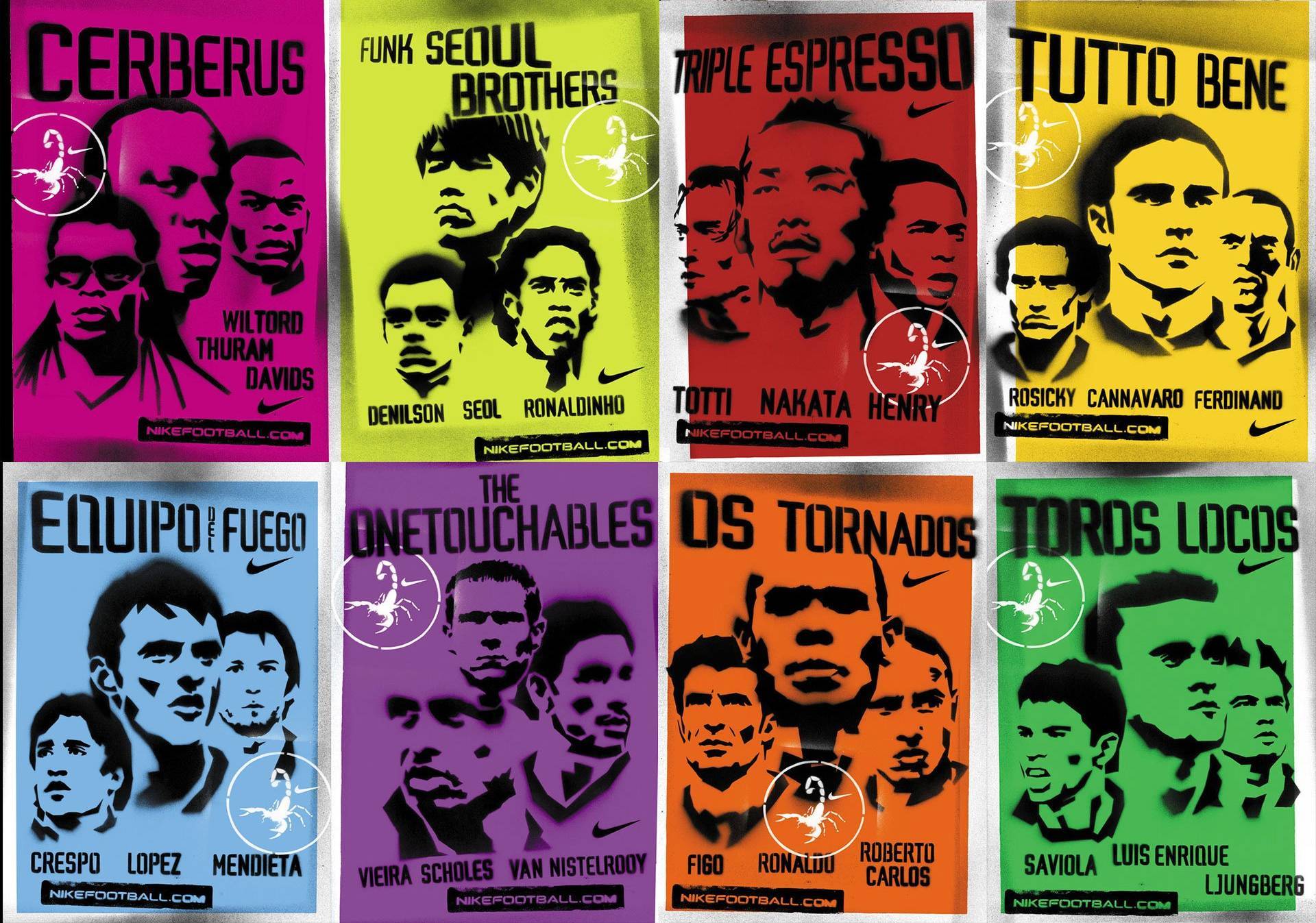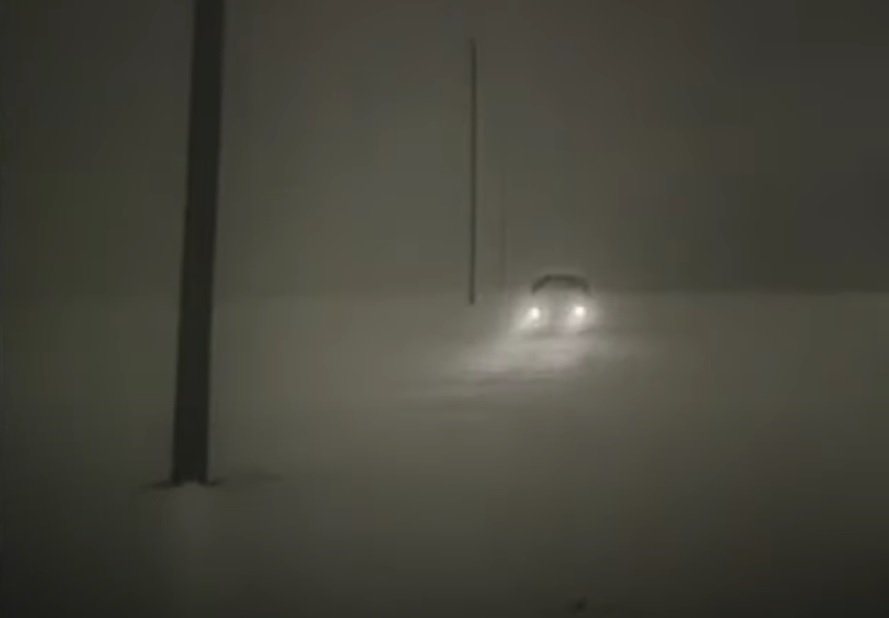Iconic Ads: Nike – Secret Tournament

Nike’s “Secret Tournament” commercial, created by Wieden & Kennedy, has been acknowledged as being the best for the Football World Cup…ever
The creative team at Wieden & Kennedy met together in the summer of 2001 at the advertising agency’s Amsterdam headquarters to discuss how they might condense the enchantment of the world’s largest spectacle into the smallest screen format possible. They had worked with Nike for quite some time, and in 2002 they commissioned Wieden & Kennedy to make a television commercial for the World Cup.
Earlier Nike commercials included “Good vs. Evil” (1996), which featured a coliseum, a flaming pitch, and, curiously, a ten-man team of famous players vanquishing a team of Satanic orcs; “Airport” (1998), which was Nike’s offering for the prior World Cup, in which the Brazil team made “Jogo bonito mayhem” in a crowded airport; and so on.
Two years later, with the World Cup in Japan and South Korea, the stakes were much higher; Nike had committed its largest worldwide media to spend in hopes of captivating a new market. A homage to the sport’s Eurocentric roots while bewitching its modern world was what Wieden and Kennedy wanted to come up with, so they settled on a rich, blockbuster atmosphere but a simple plot that celebrated Nike’s roster of world-class athletes.
The Idea
The brainstorming process took a very long time because of the strain. It was one of the first things Wolfe and his coworkers, notably Frank Kahn, jotted down on the whiteboard, but it ended up being the one they decided on. They made a three-minute masterpiece that straddles the line between art, sport, and business; a monument to sports flair and individual celebrity; a relic from the analogue media era of appointment watching and unfragmented attention. It may perhaps be considered a low-key turning point in football’s annals.
Nike’s competition, the German sportswear company Adidas, was known for its strict marketing and product design. When Nike entered the market, they essentially declared, “we’re going to be about beautiful creative football, and how can your creativity be dangerous?” So, if we only have a World Cup commercial to convey a single message, what does it become? That’s what it turned into: a cautionary tale about the power of touch.
The scorpion, a deadly creature capable of killing with a single strike, is the symbol of the campaign, and it is featured prominently on the riveted iron doors that open to reveal the advertisement at the beginning of the film. This scorpion was spray-painted at various locations around the world during the “teaser” phase.
The notion of a secret tournament came up as a result of Nike’s request for a record number of participants in the ad: 24 players from 12 nations. It was this line of thinking that Wolfe remembered: “What if there’s the event for everyone, the World Cup, but then they have one that’s just for them?” The point was that once back in the shadows of Tokyo’s streets, everyone would do their own thing in an effort to choose a victor. The only remaining issue then was how far we could set something on fire.
The first iteration of the game would have lasted little more than 10 minutes and had the participants travelling to the meeting spot on scooters in an “old Kung fu-movie manner.” Instead, the action would take place aboard a giant container ship, inside a specially constructed industrial cage, where eight teams would compete in three-on-three games with just one rule: the team to score first would win.
The Production
Hollywood set designer Stefano Maria Ortolani was hired to bring the ship to life, and Terry Gilliam, a former member of Monty Python and director of Time Bandits and Brazil was hurt by Warner Brothers’ decision not to cast him in the first Harry Potter film, was brought on to helm the production. All that was left to do was round up the team members.
Secrecy surrounded every aspect of the situation. When the players arrived, they signed in and were given instructions on where to go and what to dress. Before entering the warehouse, they had no opportunity to meet the other participants. A cage stood in one corner, and all the teams were listed on a massive wall behind a narrow field. After each revelation, I said, “Wow.” You felt like you were inside a boat at that very moment, despite the fact that you were really shooting someplace outside of Rome.
The whole roster of 24 never appeared together. Filming took place smack dab in the heart of the season, on 11 separate days spread out over the course of many weeks, making logistics a nightmare. Players arrived in unexpected dribs and drabs, and two of them never appeared at all. Many last-minute lineup changes and adjustments were made, and in some instances, all six players for a particular match were only available at separate times, thus the team relied largely on doubles and other filming tactics.
Many actors doubled for others in this film. They’d send in stand-ins for Ronaldinho, and we’d stand back and watch as he torched his pathetic defender. They had already shown the real Roberto Carlos twice, so most viewers won’t be able to tell the difference if his doppelganger is caught on video quickly driving into a defence. Your mind joins the dots for you.
One of the few constants in an otherwise sporadic shoot was Eric Cantona, who took on the unorthodox position of referee.
Among all the ingenious details, the cage is one of the most intriguing. It often represents severe restrictions. However, in the commercial, the cage is essential since it allows for tricks, rebounds, and ricochets that would be impossible on a regular field. Out of bounds is not an option for this ball. The football players’ horizons are widened rather than narrowed. In reality, the cage stands for limitlessness.
The Music
Elvis Presley’s A Little Less Conversation provides the commercial with its other magical element. The song was a huge success after being remixed by Dutch composer Tom Holkenborg, better known as JXL (the first time Presley’s estate had ever granted permission for one of his songs to be remixed), and it even made it to number one in 24 countries and was accidentally played by the DJ at Wolfe’s wedding. However, it was a complete fluke that the crew stumbled across it.
Push the Tempo by Fatboy Slim was the music that ultimately won over the directors since it was thematically ideal. However, when applied to the cut, it became so rapid that it was incoherent. In any case, they went back, and it was a bit of a fluke that they really located Elvis. In a session with sound designer Rowan Young, Frank Hahn and Wolfe overhear Young saying, “Oh, my buddy was messing around with this tune the other day, it was incredibly fantastic, it’s an old Elvis song, I’d never heard it.” He applied it to the wound, and holy cow, it imparted life, vitality, and a gleam to the whole scene.
After some early resistance along the lines of “Elvis?” About soccer? However, they chose to rework it. Tom knew Wolfe and Hahn since they lived down the street from each other. His little workplace was just a few doors down from Wieden & Kennedy. It was just supposed to be a stopgap mix until they were able to get a major performer. Once they showed it to the more well-known musicians, though, they said, “We don’t even know how he achieved this, you should go with this one since it is so great.”
Social Change
The commercial also represented an interesting turning point in the anthropological history of the sport of football. Elite players in the 20th century seldom socialised with their contemporaries who did not play for the same club or national team, causing rivalries to harden. A lot of today’s best players hang out together on vacation, share boats, tag each other on Instagram, and even try to convince each other to join the same club. Many people think the Secret Tournament, which brought together famous people and fostered camaraderie, marked the beginning of this massive breakup.
Outcome
Nike’s foreign sales surpassed US sales for the first time, while its football sales in Asia increased by 68% because of the ad’s popularity. It was also the pinnacle of a “golden age” of television commercials and the rise of really iconic sports stars who could transcend even their own culture. Other football commercials have followed the Secret Tournament, but none have come close to matching its grandiosity, impact, or captivating an audience on such a global scale.
In addition to running ads on TV, the marketing plan called for regional competitions to be held in schools, sports arenas, and stadiums in a number of national capitals around the world. The same basic idea was at play here, with teams of three players signing up to play one-goal matches in escalating knockout stages, with the finals taking place in cages similar to those shown in TV commercials.
The television commercial, which premiered around the same time as the 2002 FIFA Globe Cup, was a part of a more nuanced and well-thought-out campaign that included scorpion rules competitions in cities throughout the world. Nike’s president called it the company’s “most successful ever marketing operation” because of the estimated 2 million youngsters under the age of 16 who participated in matches in places from London to Mexico City to Beijing in June 2002.
The Players
Triple Espresso – Thierry Henry (Arsenal & France), Francesco Totti (Roma & Italy), Hidetoshi Nakata (Parma & Japan)
The One Untouchables – Patrick Vieira (Arsenal & France), Ruud van Nistelrooy (Man Utd & Holland), Paul Scholes (Man Utd & England)
Toros Locos – Freddie Ljungberg (Arsenal & Sweden), Javier Saviola (Barcelona & Argentina), Luis Enrique (Barcelona & Spain)
Cerberus – Edgar Davids (Juventus & Holland), Lilian Thuram (Juventus & France), Sylvain Wiltord (Arsenal & France)
Os Tornados – Luis Figo (Real Madrid & Portugal), Roberto Carlos (Real Madrid & Brazil), Ronaldo (Inter Milan & Brazil)
Funk Seoul Brothers – Denilson (Real Betis & Brazil), Ronaldinho (PSG & Brazil), Seol Ki-hyeon (Anderlecht & South Korea)
Tutto Bene – Fabio Cannavaro (Parma & Italy), Tomas Rosicky (Dortmund & Czech Republic), Rio Ferdinand (Man Utd & England)
Equipo Del Fuego – Claudio Lopez (Lazio & Argentina), Gaizka Mendieta (Lazio & Spain), Hernan Crespo (Lazio & Argentina)



